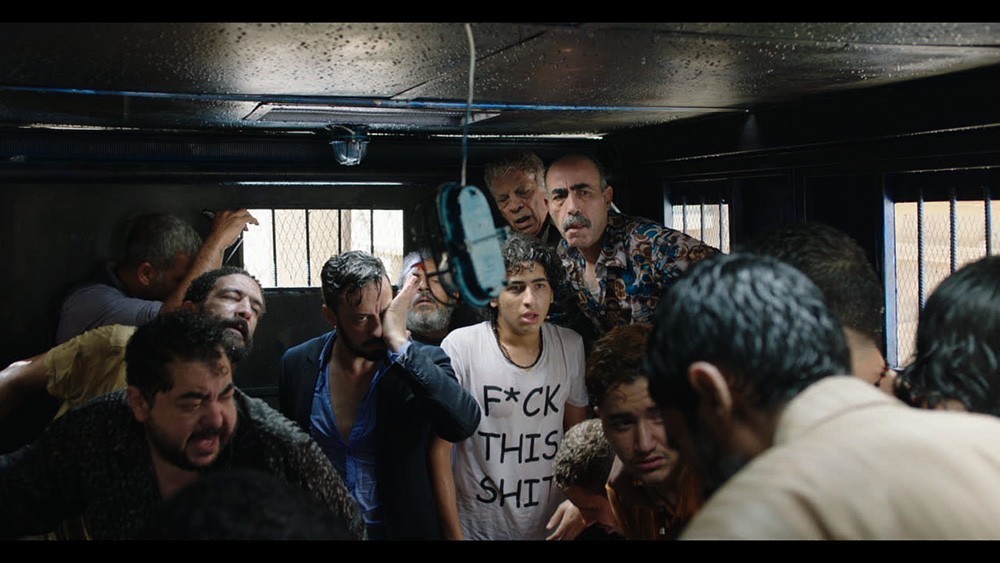Let me start off by saying that, as a fellow filmmaker, I hate this film.
The story was outstanding, the characters were original and the direction was inspiring and thus my hatred for this picture. If you have not picked up on the joke yet, you are probably Egyptian – the hot-headed, humorous, happy and, well, beautiful Egyptian that makes Eshtebak the masterpiece that it is.
With many quite tempting opportunities to follow the traditional style of Egyptian filmmaking or simply the easier approach, fearless director Mohamed Diab chooses to take the road less traveled and lead the film into what can only be described as a new wave of Egyptian cinema.
Deciding to never exit the police van in which the whole film is shot may seem like a simple task, but do not be fooled, it is not as easy as it looks. The effects of this decision are not only rooted in the film’s visual presentation but also in its plot, resulting in a sort of restraint from telling more parts of the story on Diab’s part.
This is important to note as an area in which many conventional filmmakers would have succumbed. Where others would have felt the need to exit the van throughout the film or provide exterior shots to support and progress the plot, Diab sacrifices closure for suspense. The direction of the film aims at keeping the audience as anxious as the passengers of the van and with a choice of tight shots and dedicated acting, the result is obvious within the theater seats.
It is quite complex for one to try and explain their opinions on the issues of the 30th of June, 2013 and the Egyptian coup d’état. Any attempt to do so and they will most probably find themselves submitting to the meaningless trials of the misinformed and eventually the crowd favorite,” Which side are you on?”
It is important to note that Eshtebak is not a film about the revolution, but rather a film surrounded by it. Diab believes in just that: He does not force an opinion or approach the film with a heavy hand; he lays out the story and steps back, giving the audience the chance to set aside their views and experience the effects of someone else’s.
The key to Eshtebak’s success is by far its originality. From the opening shot of the film to its last, the film is a huge breath of fresh air that has been missing from the Egyptian screen for decades. Diab is not afraid to take his time to explore the psyche of the average man and woman, working his way through various levels of society and providing us with characters that are authentic.
He does not restrain himself from visiting the small details such as an ongoing game of tic tac toe that takes place amidst all the madness. Or the dilemma of using the restroom as a passenger of a van with almost twenty others. These details are not fillers but necessary insights into how, at the end of the day and at end of all the chaos, we are all humans.
Every onscreen talent in this picture commands their role, bringing different characteristics and mannerisms to what was once ink on paper to create real and hopefully relatable personalities. Characters that were vital but abandoned in previous Egyptian films are humanized and given a voice. This is seen specifically with the central security forces – portrayed for decades as mindless followers, they now take action and these actions may have consequences.
In a shot reminiscent of Luis Buñuel’s 1929 Un Chien Andalou, in which Buñuel slices open a woman’s eye to signify how he promises to open the audience’s eyes to a new world of storytelling, Mohammed Diab promises to do the same by exposing the world to what is possible in what was once one of the world’s greatest film industries.
Eshtebak is a necessary film that is hopefully the beginning of a new wave of Egyptian cinema.







Comments (0)